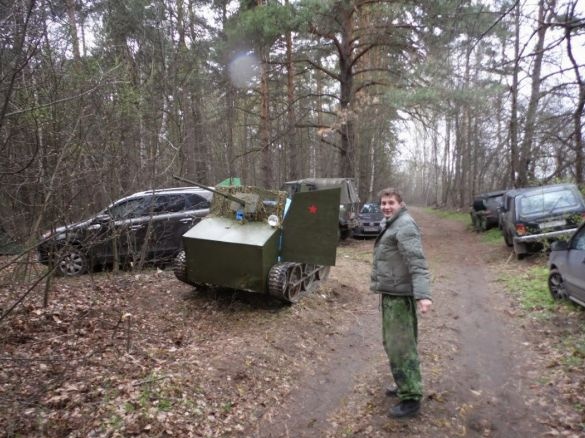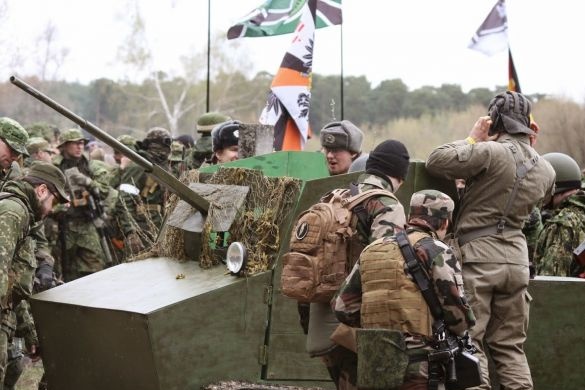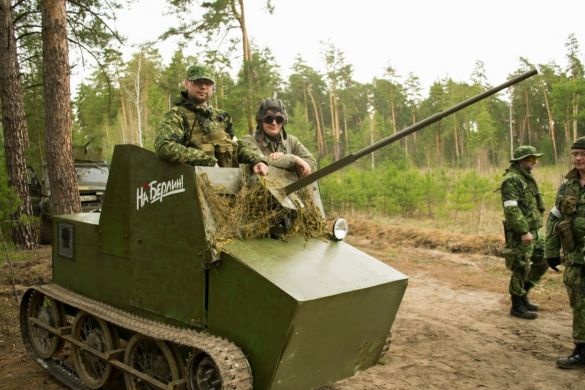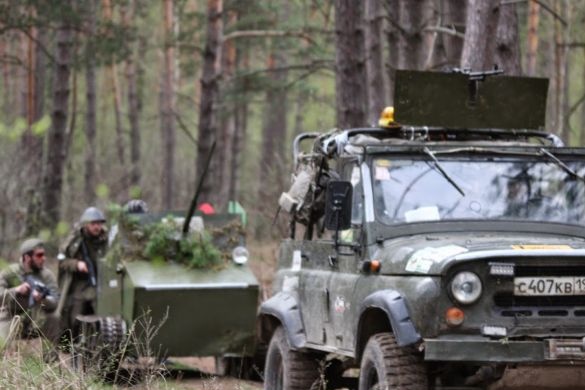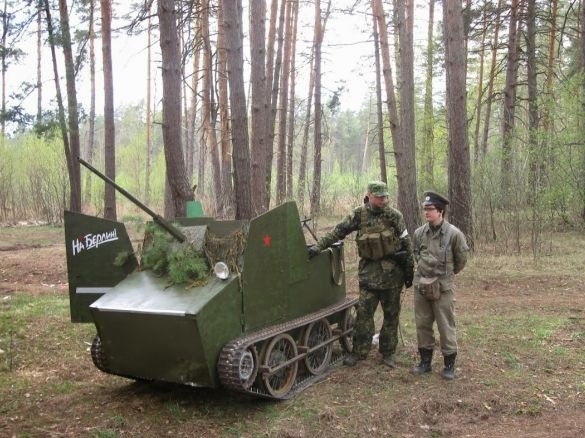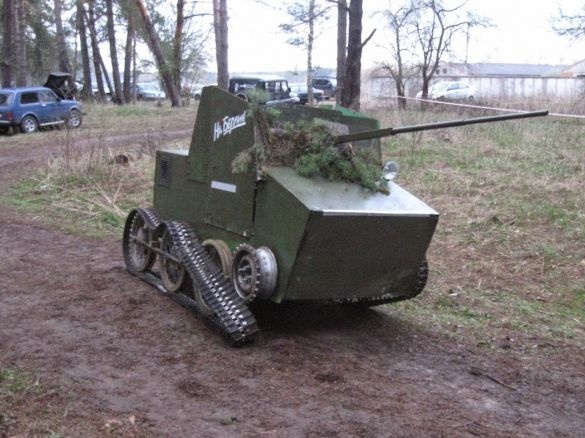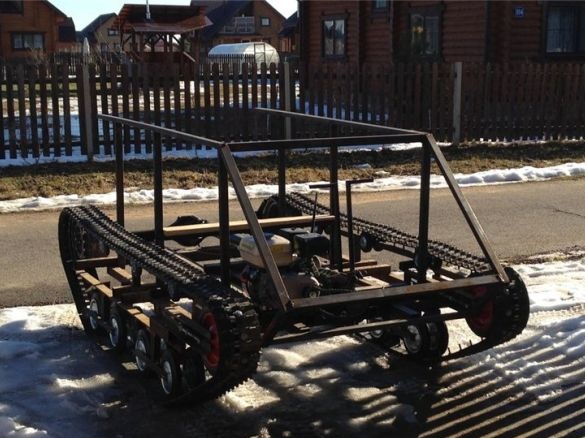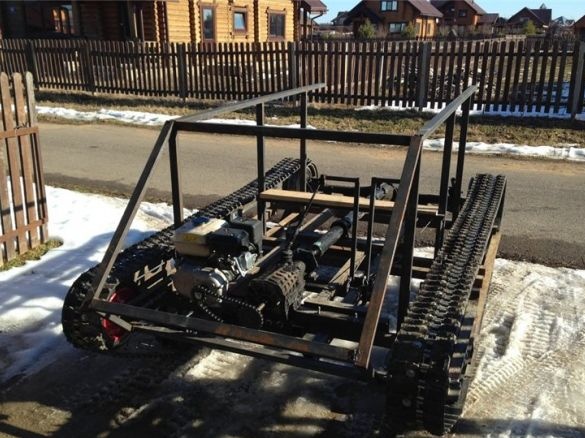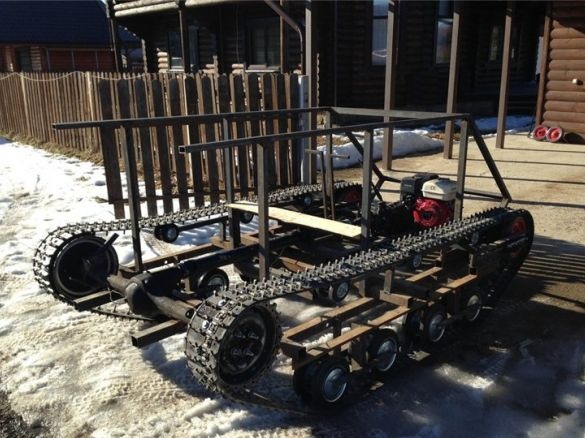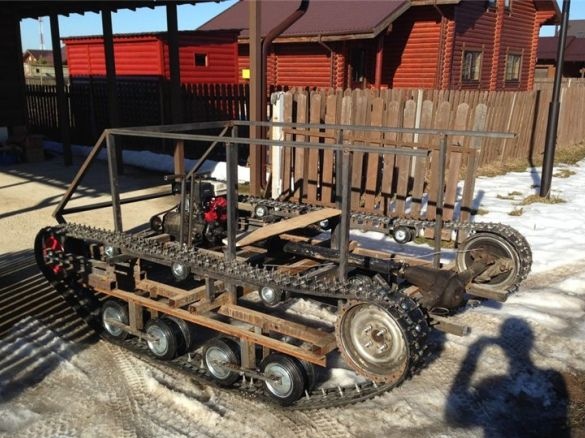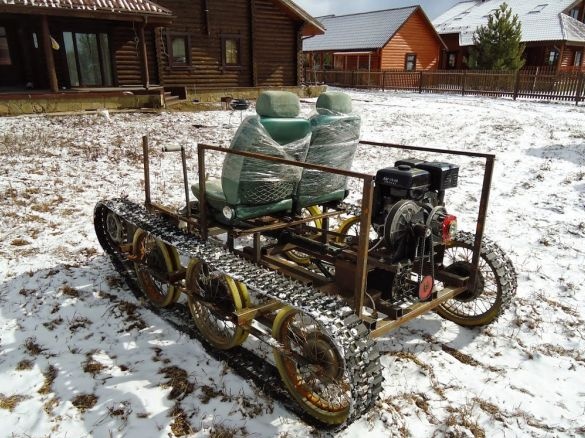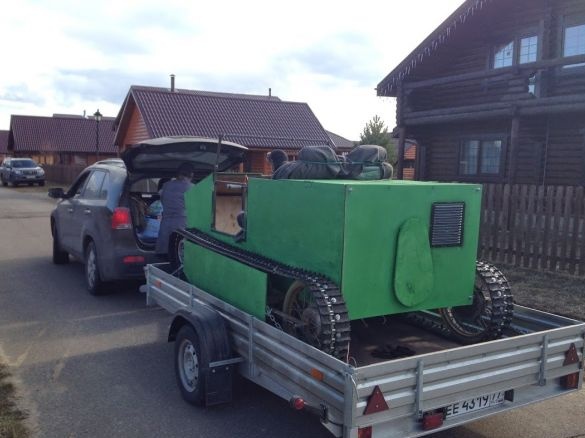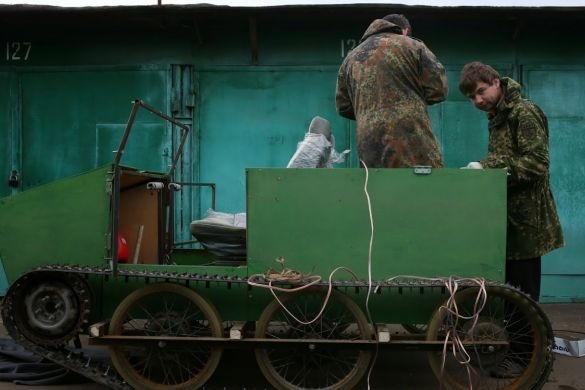Today, your court, dear readers, will appear tracked all-terrain vehicle Ivan Krasovsky from the city of Moscow.
At the forum he speaks under the nickname Werner.
In the photo we will see how our all-terrain vehicle on the reconstruction of the battles during the Great Patriotic War.
The crew of the combat vehicle.
Moment of attack.
A break between fights.
They hit us!
So where did it all start? It all started with a study of the experience of previous designers, but decided, nevertheless, to go their own way.
Before building set the following tasks:
1) Towing a trailer with a 4-seater boat to the reservoir. (~ 1 KM)
2) Clearing snow on the site.
3) Pokatushki in winter on a frozen reservoir.
4) Transportation of firewood.
Of the tools there are:
1) Welding inverter.
2) Drilling Chinese machine.
3) Grinder, drill and small things.
The main requirement during construction is the maximum simplicity of the design, the minimum (if possible) budget, the use of components and assemblies common on the market.
The basis was taken:
1) the rear axle from the VAZ-2101.
2) Gearbox (gearbox) VAZ 4 mortar.
3) a standard propeller shaft from the VAZ-2101 (penny).
4) Chinese Greenfield motor.
5) chains and drive gears from the motorcycle IL.
6) Rollers are made of twin industrial wheels d = 250 mm.
7) Caterpillars: 2 pieces per side of the snowmobile, snowstorm, sawn along and stitched.
8) The drive sprockets are made of a stamped disk for VAZ with a welded drive sprocket of 3 mm steel.
9) The frame is welded from a pipe 50X50x2 mm.
10) The frame is welded from a pipe 40X20x2 mm.
11) Angles of 50X50X3 mm are also used as supporting structures.
12) For the test period, an engine was purchased in 5.5 HP with automatic clutch.
In the future, it is planned to install a 15 hp engine and a Safari variator.
It turned out what happened.
Testing. The mileage is still very small (about 5 km), including along a snowy field, the caterpillar has never flown.
The main problem was different.
In the beginning, wheels for trolleys 330 x 50 mm on cast rubber SR-2500 were purchased.
The declared loading capacity of each is up to 180 Kg. After 2 km of run on 3 wheels (out of 20), the bearings completely collapsed.
On another wheel, the metal rim was deformed. Moreover, all other wheels work flawlessly.
I suspect that this is a Chinese marriage.
I decided to leave these wheels only as tensioners. I installed 250 mm industrial wheels on trolleys with molded rubber, anthers and a needle roller bearing.
Testing continues.
Conclusions, design changes and the following trips.
Reducing the diameter is a necessary measure. The 250mm wheel has a large carrying capacity (up to 200 kg), and it is also easy to buy everywhere and inexpensively.
Wheels of this series with a large diameter are more expensive and are available only on order.
In Moscow, they could not be found in the warehouses of suppliers.
Damage to the wheels of the SR-2500 is associated with several factors:
1) Low quality metal or factory defect. All broken wheels had sand in the bearings.
It is necessary to carefully look at the installation ... or do a bulkhead before installation with the replacement of grease, that is, do everything yourself and with high quality.
2) Incorrect installation of wheel play, misalignment, etc.
It is noteworthy that all the failed wheels were either the first in the cart or the last. They took the blow when moving forward or reverse first. Especially when you overcome obstacles in the form of a log, the all-terrain vehicle hangs on the front and rear supports, all the weight falls on them, they can not stand it.
Test trips continued and conclusions were drawn:
1) Wheels with tires made of cast rubber do not withstand loads.
With the installation of wheel bearings 103, the situation improved, but when overcoming significant obstacles (fallen trees, big bumps and stones), the roller and tensioner crumple.
Metal does not withstand the load.
Decision: to install wheels from a Ural motorcycle with a polyurethane layer welded on its own sketch.
2) Replace the engine with a more powerful Lifan 15ls and refuse centrifugal clutch.
3) Install the Safari variator.
4) Weld a new frame.
5) Add rubber bushings to the canines of the tracks to reduce wear on the rollers.
There is a lot of work ahead. The main unsolved problems:
1) It is necessary to install the bearing on the gearbox shaft. There is no simple solution yet. Because the sprocket is welded at the very edge of the shaft.
2) It is necessary to strengthen the track tensioner bolts.
3) Move the gearshift backstage forward, as the gearshift is inconvenient. Make gear shifting convenient.
Work began, one might say, on a new caterpillar all-terrain vehicle, taking into account all the mistakes and developments in the previous version.
New wheels are taken as a basis.
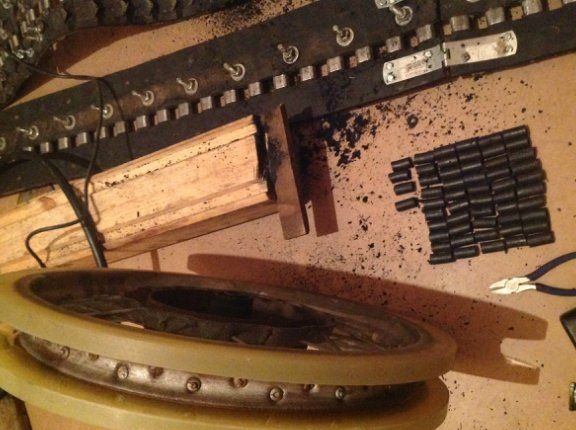
New track with guides for a new sprocket.
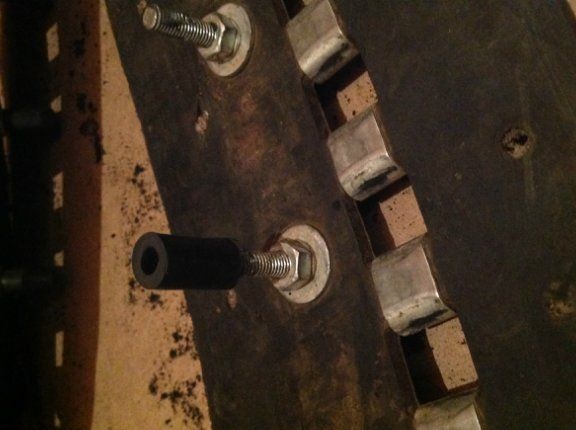
The trolley is ready for use.
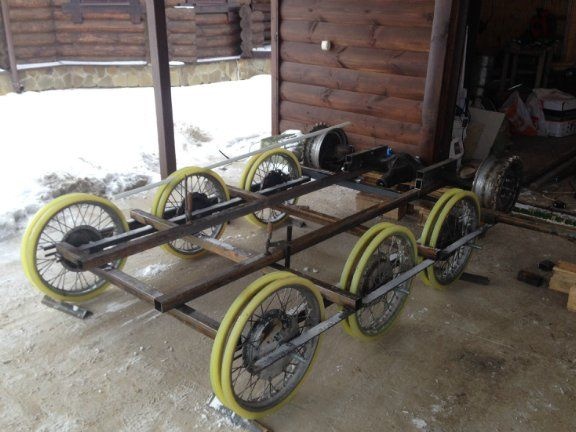
New leading stars.
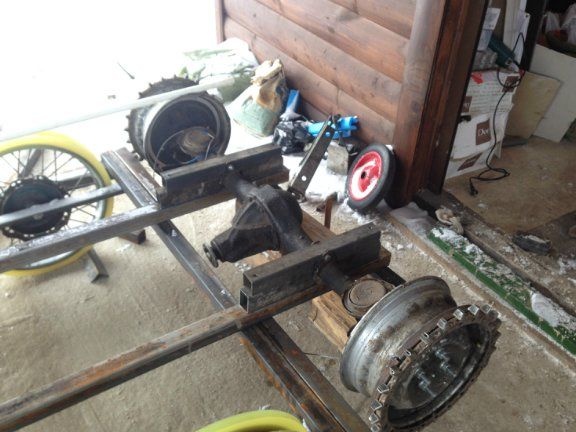
Alignment of the drive axle and alignment, alignment check.
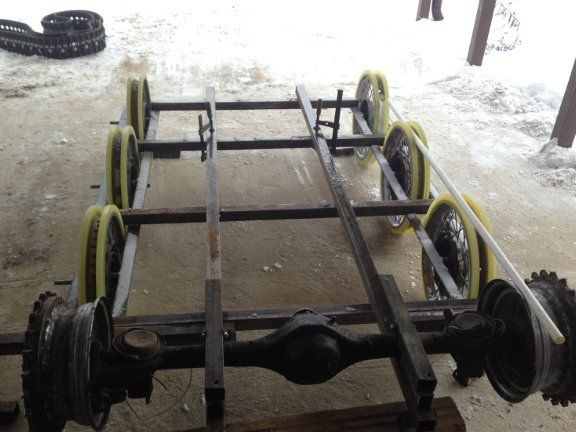
Enclosure in the frame of the support wheels.
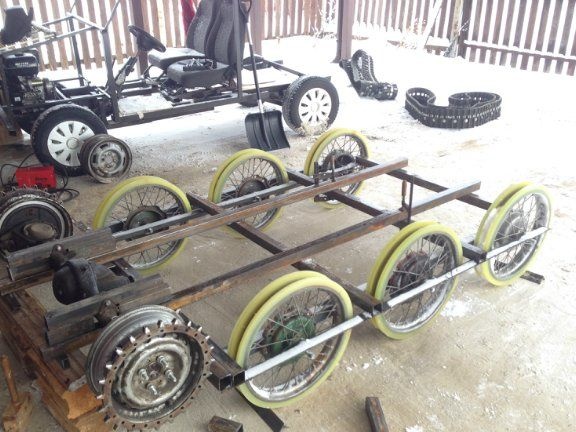
Installation of hydraulic booster on the brakes.
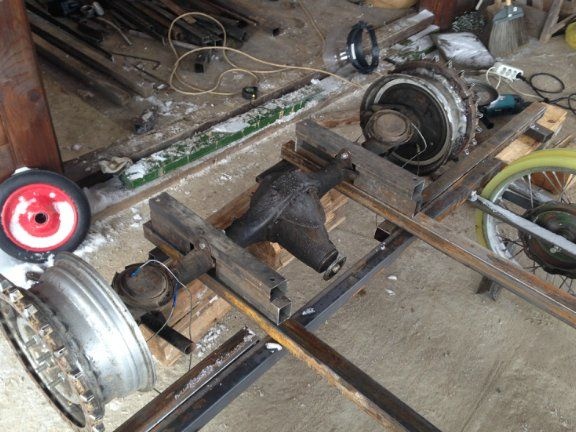
Fastening the drive axle.
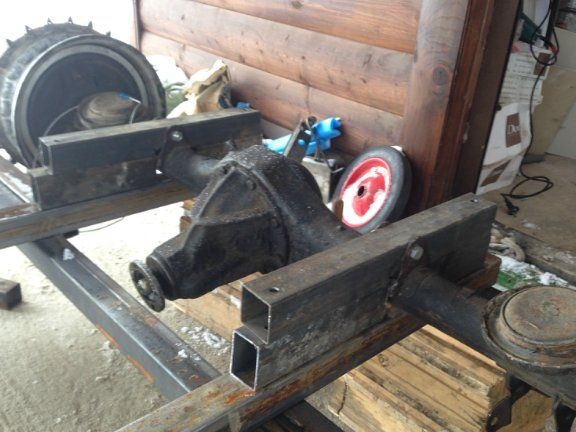
Engine installation.
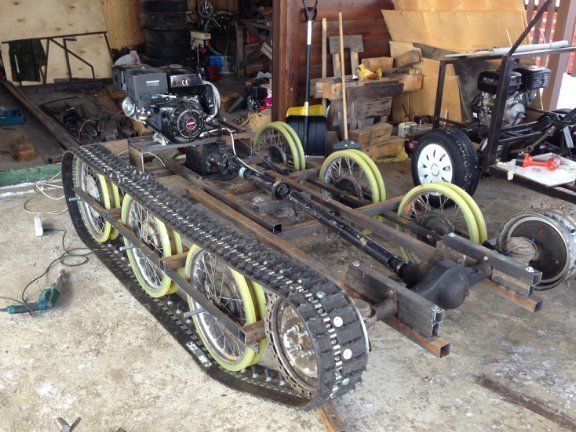
One caterpillar is dressed and the driveshaft is bolted.
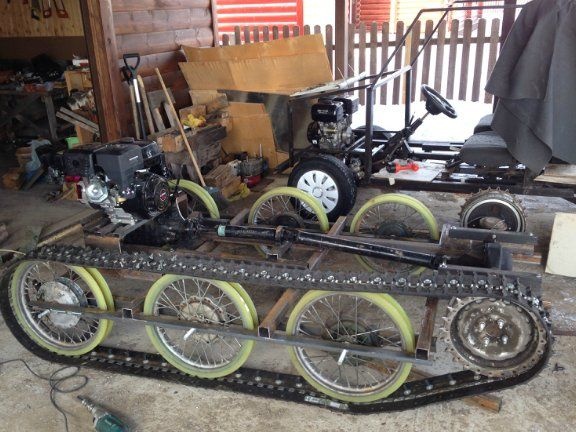
Preparation of the second caterpillar.
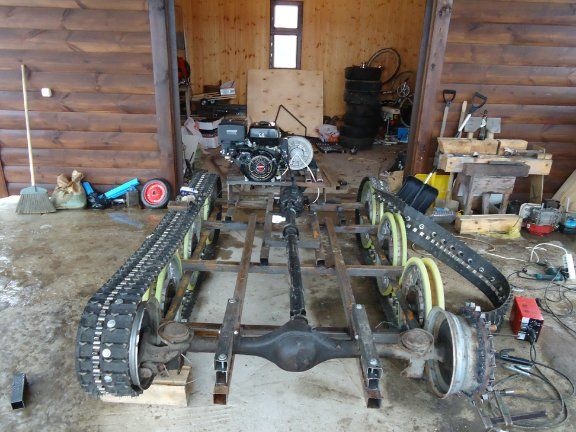
Sloth tension system.
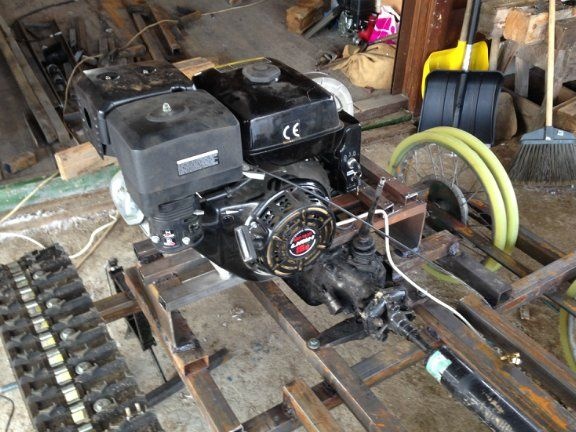
The platform for the seat.
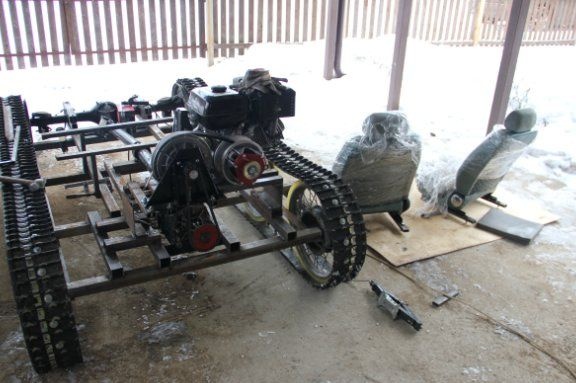
Seat preparation.
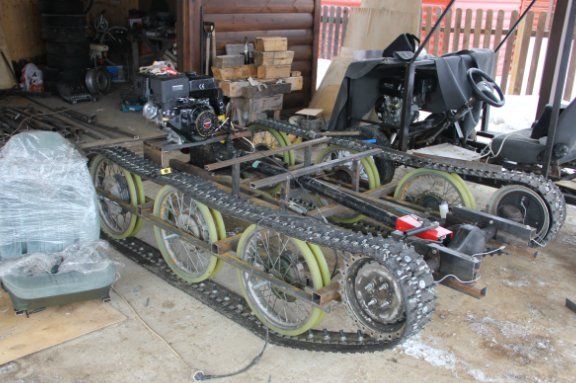
Connecting the brake system.
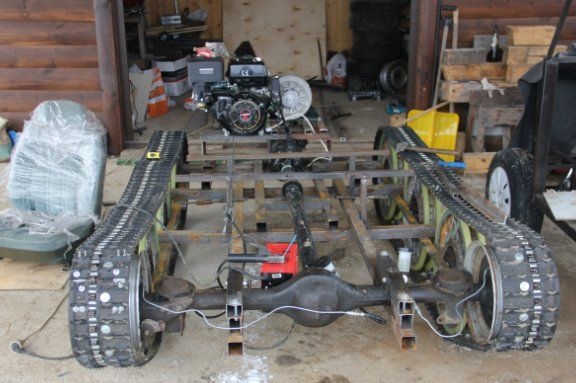
Strengthening the sprocket mount.
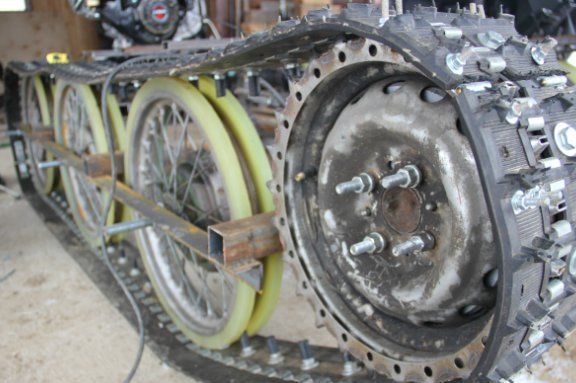
Installing the variator.
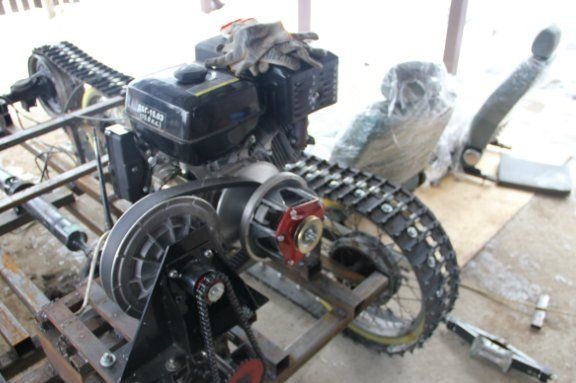
Install chain drive.
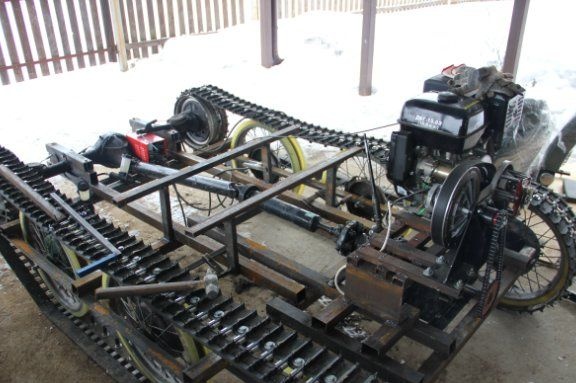
Installation of control levers.
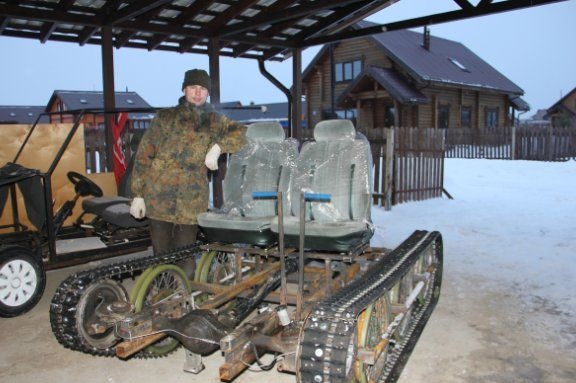
Before running in.
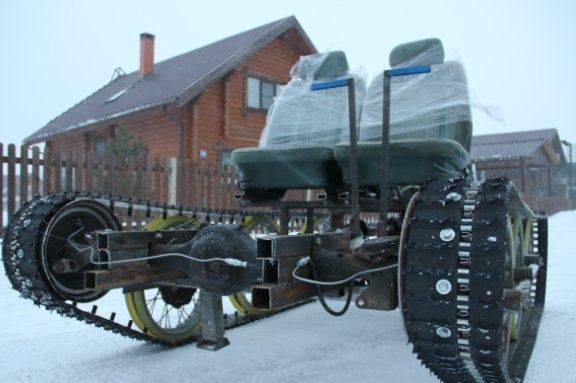
We start the engine.
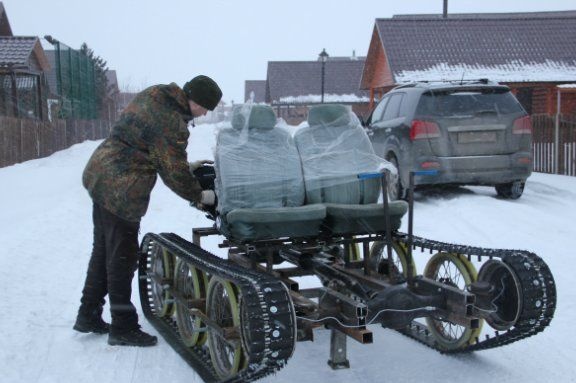
Engine break-in.
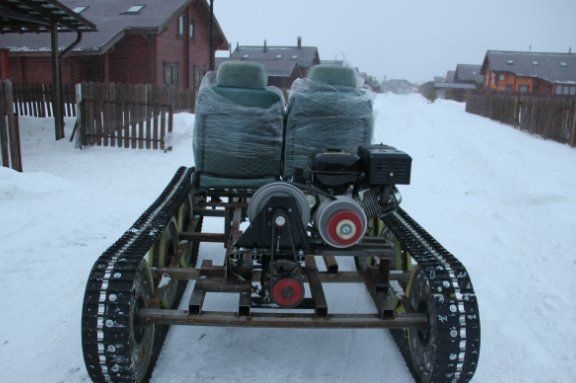
Running-in suspension.
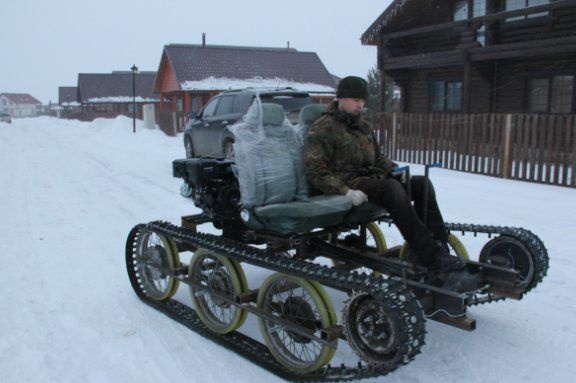
On the run-in.
Run-in completed.
Urgent trip to Moscow.
Emergency work on the installation of an armored hull, a tower and electrical wiring, preparation for the reconstruction of battles.
And then about the hostilities you already know from the beginning of this article about all-terrain vehicles from Moscow Ivan Krasovsky and his friends.

